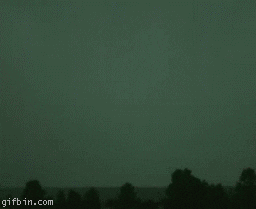
Science Fiction as the Subverted Fairy Tale
Will Crystal
What makes a fairy tale? An insurmountable task? A fairy godmother? A story of radical transformation? Most of us can say what a fairy tale feels like but not what it is. French anthropologist Claude Lévi-Strauss considered the fairy tale a kind of myth, and that “the purpose of myth is to provide a logical model capable of overcoming a contradiction.” The world of the myth, and thus the fairy tale, is one defined by binary oppositions to be overcome—cosmological oppositions (e.g. between an upper world and a lower world), sociological ones, and sometimes economic ones. Others have tried to describe fairy tales in terms of specific motifs or tropes. Soviet folklorist Vladimir Propp outlined 31 basic functions that constitute a fairy tale narrative, not all of which must be included for a story to be considered a fairy tale. Some of these functions can be summarized as: the protagonist is confronted with an interdiction or prohibition which he or she violates in some way; the endowed protagonist is tested and moves on to battle and conquer the villain or inimical forces; there occurs a sudden fall in the protagonist's fortunes that is generally only a temporary setback.
Despite the so-called fairy tale ending, the world that fairy tales present is not usually an optimistic one. It’s a world in which young girls must avoid telling strangers where they are going, old ladies feed children candy only to fatten them up to be eaten, and adopted children are emotionally and physically abused by their step-sisters and mother. While more modern adaptations have sanitized the most grotesque, and often gory, aspects of these stories, the worlds depicted remain shockingly cruel upon reflection.
It seems we present such a frightening, anarchical world to our children not merely due to historical accident, but because fairy tales are essentially didactic tools. While we tell these stories to entertain, we also tell these stories to our impressionable youth because we fear that these worlds are a reflection of the world we live in. We present our children with the worst of human nature in order for them to recognize the danger in their own world and understand how to navigate it. Children are remarkably good at extrapolating from the particular in these stories to develop general principles about how to behave (when I was perhaps 6 or 7 years old and on a playdate, I remember refusing to tell a friend’s mom where I lived, much to her bemusement. I can’t attribute this all to being familiar with Little Red Riding Hood, but I like to think there is some relation). Children often find themselves in environments that present real or imagined danger, and the fairy tale provides a kind of roadmap for how to behave.
More specifically, fairy tales present children with a moral framework that reflects the traditional values of the culture in which they are told. The stories that are passed down orally over generations represent the teachings considered fundamental to a culture, and these teachings bend conservative. Cinderella is a celebration of humility over vanity. Depending on the reading, Hansel and Gretel is a condemnation of both gluttony and challenges to the patriarchal family unit (it is the step-mother who forces Hansel and Gretel out of the house, causing their peril). This phenomenon is not unique to Western fairy tales either. The Chinese tale of Kuafu, who dies chasing the sun, teaches us to reject pride and accept the natural order of things. The central tension of the typical fairy tale can be accurately described as a perturbation to the society’s traditional morals or norms, and the fairy tale ending resolves the tension through the reassertion of the traditional system.
Science fiction shares important cultural functions with the fairy tale, though there are notable differences as well. Like the fairy tale, the science fiction story typically presents a pessimistic conception of the world and our shared human nature, and like the fairy tale, the science fiction story is typically understood as parable as well as story. George Orwell’s 1984 teaches us, among other things, to be wary of collectivist thought. Philip K. Dick’s Do Androids Dream of Electric Sheep? warns us of humanity’s tendency to subjugate others, and the ways in which possible technological advances can enable and justify it.
Unlike fairy tales, science fiction does not typically adhere to one strain of ideology. Where classical fairy tales affirm traditional social norms, science fiction shines a light on them to complicate or disrupt them. As science fiction stories are less of a reflection of the societies in which they are produced–they are not typically transmitted orally and enjoy less widespread appeal–there exists a far wider range of moral messages. Much of science fiction, like fairy tales, is cautionary, which inherently imbues a cultural conservatism. Change is not an unmitigated good, and so-called progress is not guaranteed by technological or cultural advancement. On the other hand, science fiction can present deeply imaginative worlds that critique not how the world could be, but how the world is, now. These stories give us the distance that allows us to examine critically our own societies as they are.
As a child, and still as an adult, I loved Orson Scott Card’s Ender’s Game. The book presents a future humanity reeling from two invasions by an alien race pejoratively called “buggers.” The governments of the world use the common foe to form a fragile world government, one which allows them to prepare for what they see as the inevitable third invasion. As a gifted child, Ender is enlisted into a grueling program to prepare him for command in Earth’s International Fleet. In order to cultivate his excellence, Ender’s teachers subject Ender to an isolation whose severe mental and emotional costs we are forced to confront throughout the book. We are then confronted with the even more severe emotional cost of the genocide Ender commits against the buggers, and the vast human loss made in order to accomplish it. Despite the constant awareness of the human costs of Ender’s self-sacrifice, we are never made to believe it is anything but necessary. Ender’s kind spirit is stifled for humanity’s future, but the sacrifice of the individual for the benefit of humanity is one to be celebrated. The violence Ender inflicts on his enemies is brutal and terrible for those who are subjected to it and Ender himself, but in a world without rules, it is kill or be killed. The instinct to destroy what is foregin is lamentable, but we are victims of a lawless system that does not reward virtue. The morals of Ender’s game are complications of traditional ones, yet they are traditional all the same.
On the other hand, science-fiction stories like Arrival present a similar conception of the world, a lawless free-for-all in which the instinct to attack first and think later is typically rewarded, but they also present avenues to transcend it. In Arrival linguist Louise Banks is tasked with communicating with the so-called “heptapods,” whose 12 vessels have landed across the globe. These creatures use a non-linear linguistic system, which allows human beings who understand the language to perceive time in a non-linear fashion. Other nations perceive the foreign creatures as threats and seek to destroy them, but only through use of the heptapods language system does Louise stop the violence. Humanity’s violent, terrible instincts are not merely to be lamented, but wholeheartedly rejected. We can surpass the zero-sum system built on fear and not only can we suppress our instinct to destroy what is foreign, we ought to. These two stories display the wide range of moral messages that science fiction can endorse in comparison to the more limited range of traditional fairy tales.
While the fairy tale is written to provide moral and pragmatic instruction to children, it is not just children who find themselves in strange environments in dire need of guidance. Today’s adults are increasingly finding themselves inhabiting spaces with which they have little familiarity, without any authority figure to offer guidance. More than that, they find themselves in a culture, whose values are rapidly evolving and whose fairy tales perhaps do not accurately reflect the mores of the current day and age. Times change and every new generation encounters situations with which their parents are entirely unfamiliar. But the 21st century has seen some of the most rapid changes to how we fundamentally interact with one another and view ourselves. Not only have many of us experienced great changes within our own lifetimes, due to the advent of handheld technologies and social media the increased awareness of our societies’ marginalized, but we also expect this trend to continue, if not accelerate.
Recent years have seen a proliferation of movies and media that feed our newfound hunger for some kind of structure by which to make sense of the world. Shows like Black Mirror present short science fiction stories that often present chilling conceptions of our shared future. These cautionary tales often appear in structure and content similar to the traditional fairy tale. Movies like Interstellar and Dune provide further examples of the contemporary emergence of science fiction into the celebrated mainstream.
What our generation needs is the fairy tale for our time. We yearn for stories that will teach us righteous behavior in a world that feels unfamiliar and morally ambiguous. But where the fairy tale affirms the morality of the past, we need stories that show us the morality of the present, and even the future. Science fiction stories and new understandings of traditional fairy tales can provide that moral guidance that we so keenly lack. And so through the subversion of the fairy tale we come to devise stories that increasingly resemble science fiction.
The theme of this issue is the subverted fairy tale. You might think that strange for a scientific, humanities publication, but science fiction and fairy tales are different sides of the same coin, and as we toy with fairy tale structure and form, the distinction begins to blur.

